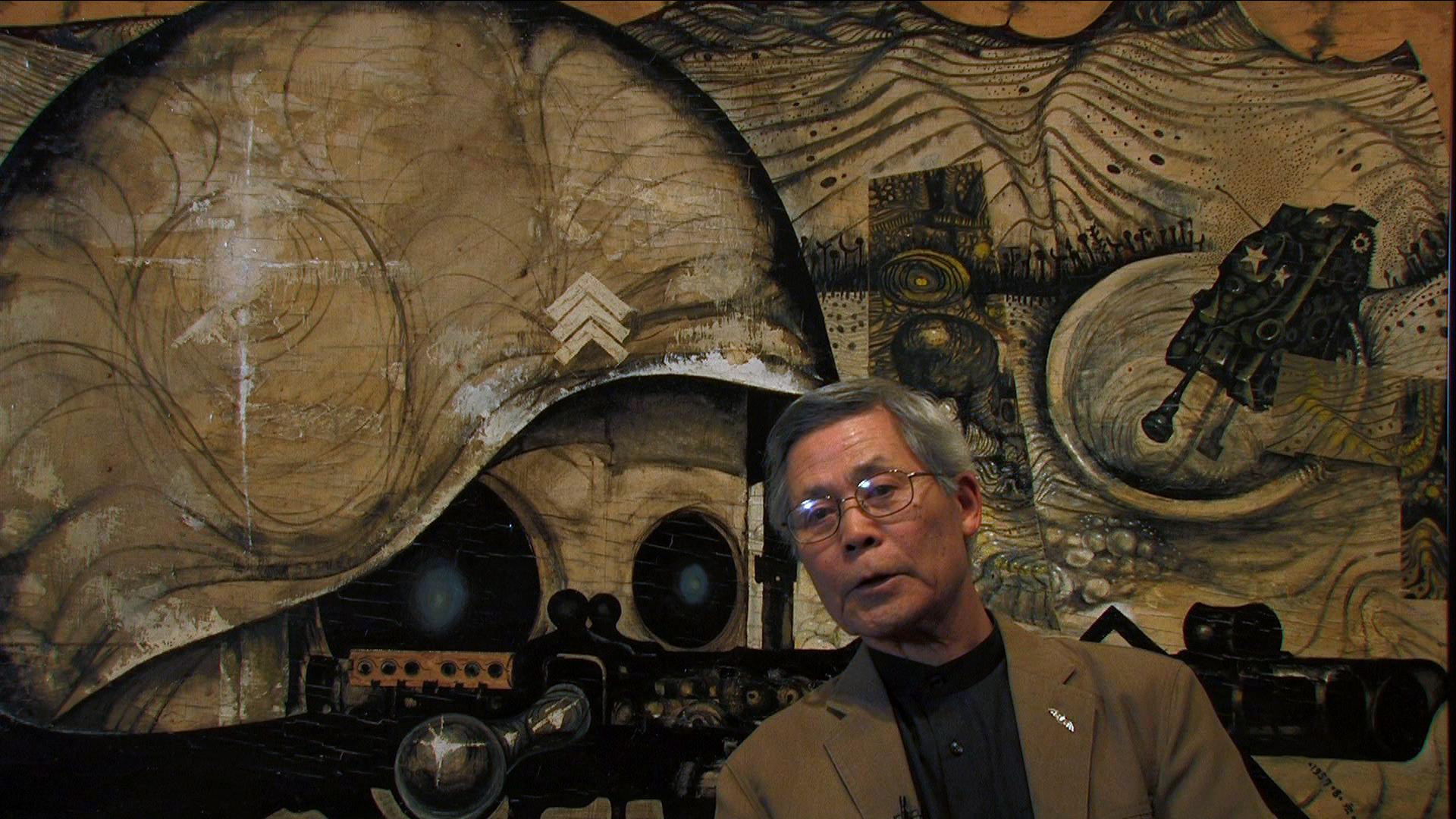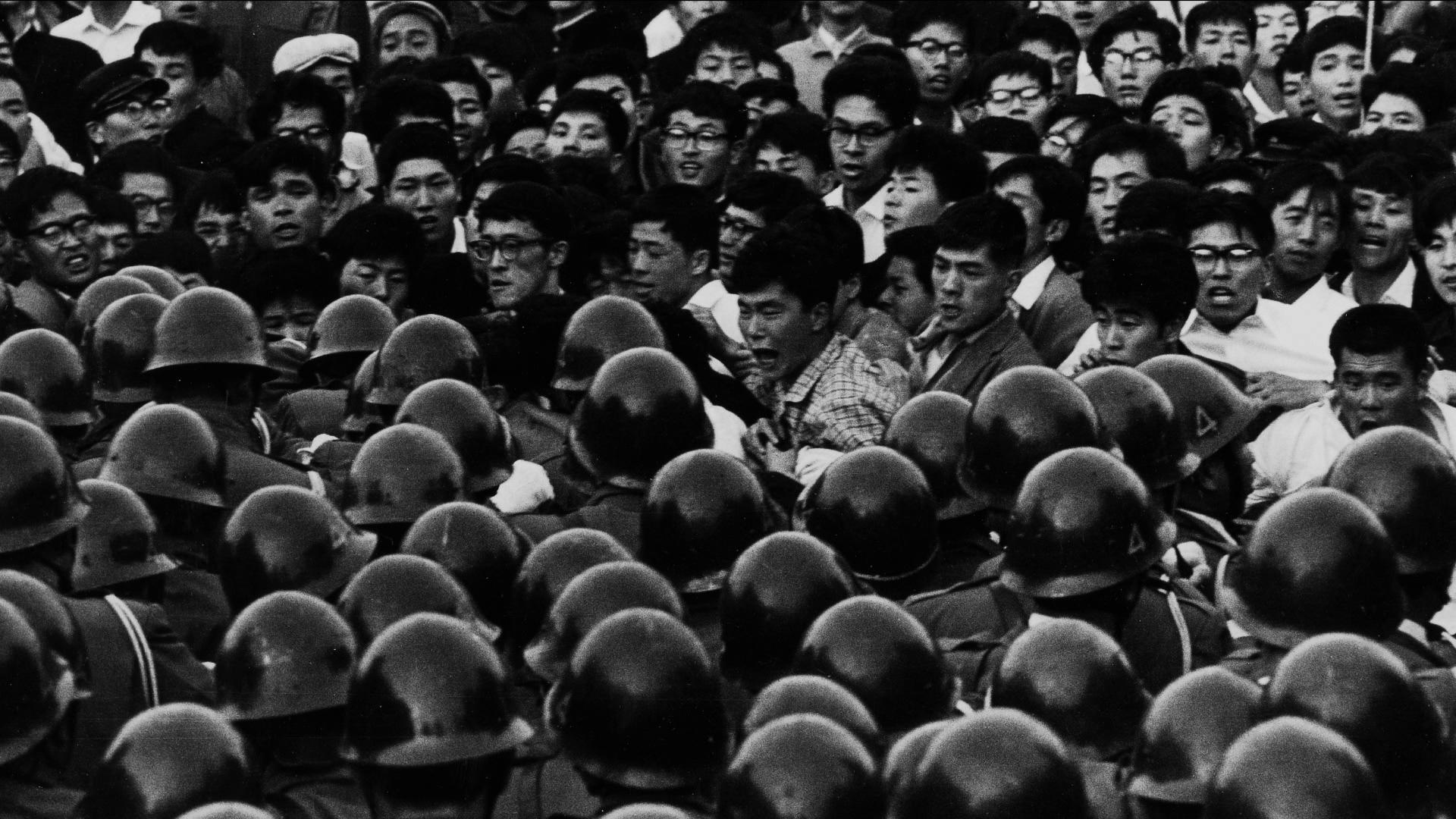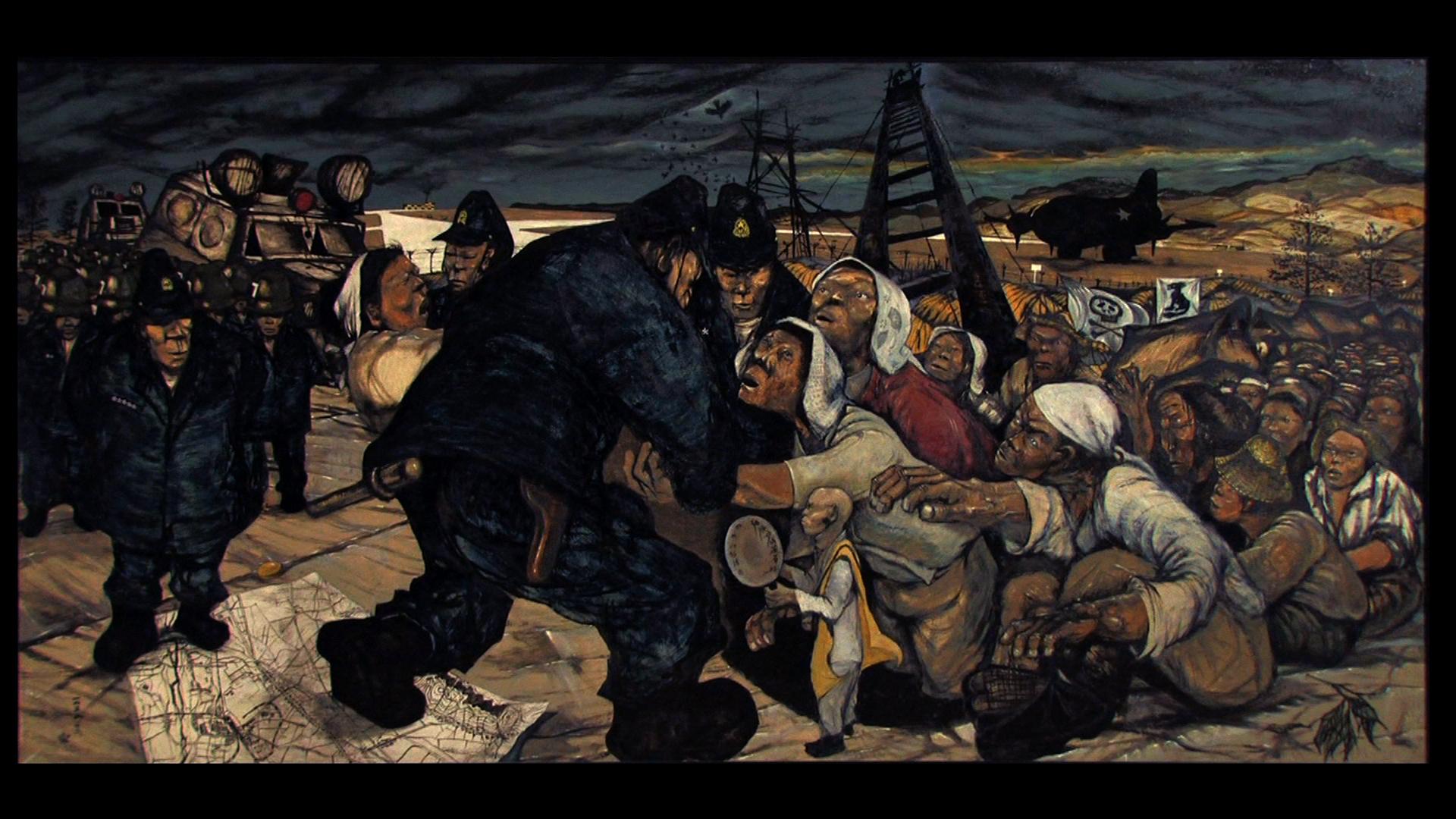 Linda Hoaglund’s documentary ANPO: Art X War (New Day Films, 89 min., 2010) highlights Japanese and Okinawan artists — and their powerful, provocative paintings, photos, anime, and films to show the ongoing resistance in Japan (including Okinawa) to the U.S. military presence since 1945. The film focuses on the remarkable Japanese protests of 1960, when masses of people unified against ANPO, the U.S.-Japan Mutual Security Treaty.
Linda Hoaglund’s documentary ANPO: Art X War (New Day Films, 89 min., 2010) highlights Japanese and Okinawan artists — and their powerful, provocative paintings, photos, anime, and films to show the ongoing resistance in Japan (including Okinawa) to the U.S. military presence since 1945. The film focuses on the remarkable Japanese protests of 1960, when masses of people unified against ANPO, the U.S.-Japan Mutual Security Treaty.
ANPO, which was passed secretly, allowed U.S. bases to be located in Japan in exchange for U.S. protection. The U.S. occupation continued until 1952 for most of Japan; in Okinawa it continued until 1972. Unfortunately, the end of the occupation has not meant the end of U.S. military presence. Today, there are approximately 90 U.S. military bases and 40,000 U.S. soldiers in Japan.
Hoaglund, a filmmaker raised in Japan by American missionary parents, has a unique perspective on this occupation, its many negative effects on the people of Japan and Okinawa, and the nonviolent resistance movement that has endured for half a century in opposition to it. She introduces us to painters, photographers, journalists, and theater directors — all of whom have fought for peace through their art.
Excerpts of the teaching activities included in the PDF:
- Gallery Walk: Before they view the film, post photos and artwork from the film in stations around the classroom. Have students talk together in small groups at the stations and answer the following questions.
- Mixer: Before they view the film, provide each student with background information on one of the six main photographers and artists. Have students read their roles, underline the key parts, and then, on the other side of the role sheet, write down three important pieces of information about their role.
- Visual Organizer: Have students take notes using a visual organizer while watching the film.
- Interior Monologue: After viewing the film, ask students to choose someone or something from the documentary and write from that voice.
- Talk Back: Have the students look at a collection of quotes from the film. Ask them to pick three to five quotes that stand out and “talk back” to those quotes in their own voice.
- Textbook Critique: As a class, analyze your history textbook. What part of the history included in ANPO: Art X War can you find in the text? What is left out? How do you account for these omissions?
- Trial: Ask students to look at Ureshino’s “A Little Girl Killed by a U.S. Military Truck.” Hold a trial around the question “Who is responsible for the death of this child, Nariko Tsugayama?”
ANPO Film Trailer
The following images are included in the PDF. They are available here as larger versions to download.Instructions: 1) Hover over image thumbnail. 2) Right-click and select SAVE IMAGE AS. 3) Choose a location (i.e. desktop, Downloads folder, etc.) and save.
 This lesson was originally published in the Spring 2012 issue of Rethinking Schools.
This lesson was originally published in the Spring 2012 issue of Rethinking Schools.
Related Resource
 Democracy Now! on Japan. Democracy Now! offers many in-depth stories on Japan including the January 16, 2014, broadcast, “Okinawa’s Revolt: Decades of Rape, Environmental Harm by U.S. Military Spur Residents to Rise Up.” Democracy Now! is a national, daily, independent, award-winning news program that provides its audience with access to people and perspectives rarely heard in the U.S. corporate-sponsored media, including independent and international journalists, ordinary people from around the world who are directly affected by U.S. foreign policy, grassroots leaders and peace activists, artists, academics and independent analysts.
Democracy Now! on Japan. Democracy Now! offers many in-depth stories on Japan including the January 16, 2014, broadcast, “Okinawa’s Revolt: Decades of Rape, Environmental Harm by U.S. Military Spur Residents to Rise Up.” Democracy Now! is a national, daily, independent, award-winning news program that provides its audience with access to people and perspectives rarely heard in the U.S. corporate-sponsored media, including independent and international journalists, ordinary people from around the world who are directly affected by U.S. foreign policy, grassroots leaders and peace activists, artists, academics and independent analysts.














Twitter
Google plus
LinkedIn